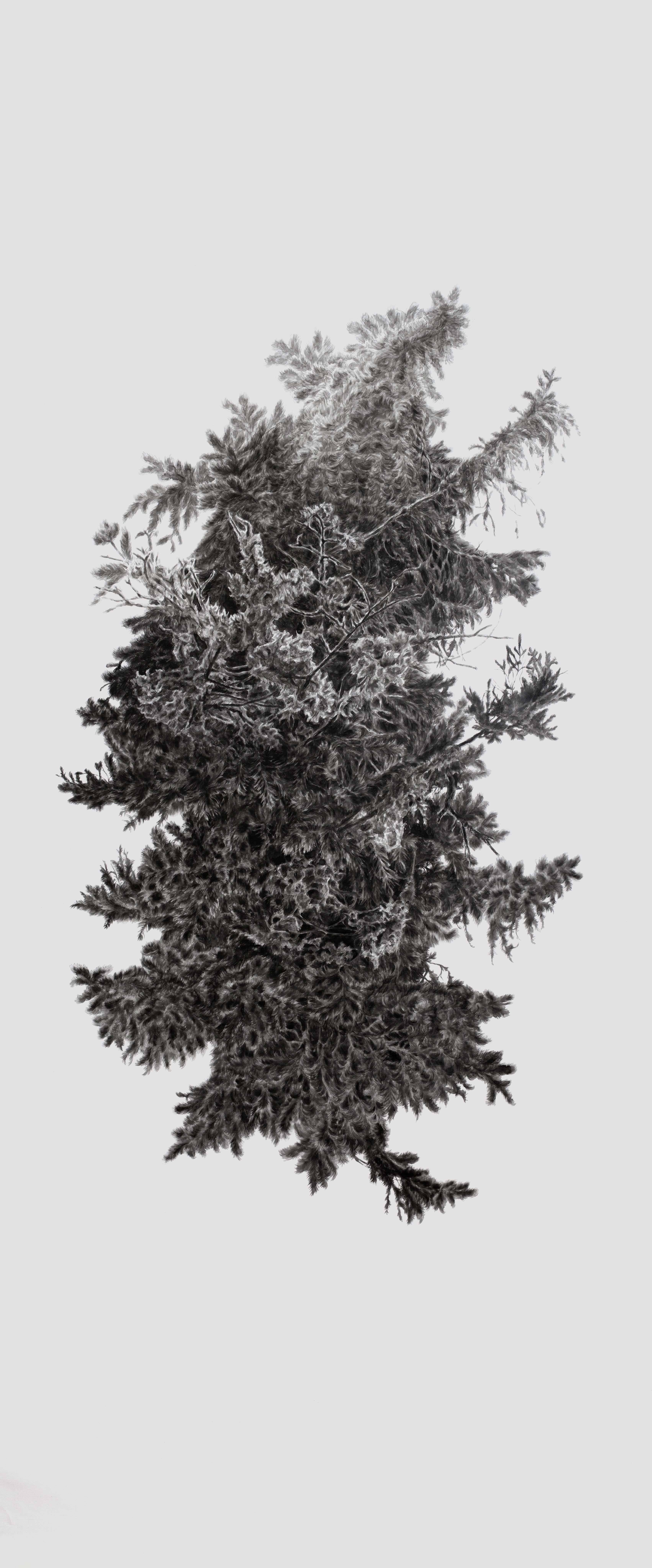
01 10
08 11
2025
When the Rain Grows Quiet
Lenka Falušiová
Curated by Barbora Kundračíková
Visual artist Lenka Falušiová, who hails from the Jeseník region, is primarily interested in one thing in her work: creating spaces in which images become an interface between the visible and the imagined. In this sense, she deliberately and consistently transcends the limiting framework of the image, or rather, she consciously and consistently intervenes in its internal order. Her monochrome prints, drawings and paintings function as visual matrices; they do not depict, but rather convey – calm, structure, inner rhythm. The reduction of colour to one or two tones is not merely a stylistic gesture here, but a distinctive epistemological tool for “reading the world differently” (Johanna Drucker, 2014), for giving meaning to its chaos and changeability.
We tend to understand monochrome as a transformed excerpt from reality. In this case, however, it is more of an example of an analytical operation – a kind of aesthetic filtration that highlights the texture, depth and material graininess of the image as key variables of our personal visual experience. Just as a scientist models data to reveal hidden patterns, Falušiová models the landscape into a “visualisation of the invisible”, bringing her images closer to the concept of “epistemic credibility of the pictorial model” (Peter Galison, 1997). She is not a realist in the sense that she records the world around her and presents it to our attention as such, but in the original, philosophical sense – she believes in the world as a structure, experiences it, grasps it and stabilises it in the visual spectrum.
Trees, animals, and ultimately even the "intangible" and immaterial – yet crucial because proto-structural – represent symbolic nodes organising networks of inner experience. The forest as we know it, as we walk through it and visualise it retrospectively, dream about it, functions here as a projection screen for personal mental maps that are not exact but ecstatic – similar to “mental images born of data silence” (Frank Wilczek, 2015). It is precisely in this contemplative reduction that Falušiová finds a form of silence that is not empty, but rather saturated. “No silence is absolute; each has its own rhythm,” James Elkins ultimately reminds us in his reflections on the perception of images, i.e., artificially created visual spectra (Elkins, 1999).
In Falušiová's conception, the image thus becomes a kind of theoretical analysis put into practice, during which subjective experience is placed within the framework of rational visualisation, formation or articulation of a concept. In this sense, form is not an expression of emotion, but the result of internal structuring. The images do not show the world – they construct it as a sensory and mental model, thereby multiplying our enjoyment of them, perhaps even our fascination.
